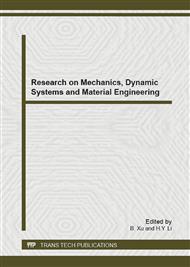p.177
p.181
p.185
p.189
p.193
p.198
p.202
p.206
p.210
Optimization of Sanding Parameters for Wood Surface of Plantation-Magnoliaceae glanca Blume
Abstract:
In order to analyze the relation between wood surface roughness of plantation- Magnoliaceae glanca Blume and sanding parameters, an orthogonal test and a single factor test were performed. The results show that the mesh of the sandpaper has remarkable influence on wood surface roughness of plantation-Magnoliaceae glanca Blumes, but the feeding speed and sanding thickness don’t; when the mesh of the sandpaper is 150, the feeding speed is 6m/min and sanding thickness is 0.6 mm during the first sanding and the mesh of the sandpaper is 320, the feeding speed is 9m/min and sanding thickness is 0.2mm during the second sanding, the smallest roughness (Ra) was obtained as 2.45μm. In the theory optimization scheme, changing feeding speed into 9 m/min with considering production efficiency and changing the mesh of the sandpaper into 240 with reducing consumption of the sandpaper, then engineering optimization scheme was obtained, and the wood surface roughness (Ra) is 2.70μm.
Info:
Periodical:
Pages:
193-197
Citation:
Online since:
December 2012
Authors:
Price:
Сopyright:
© 2013 Trans Tech Publications Ltd. All Rights Reserved
Share:
Citation:


